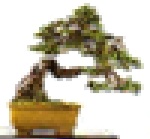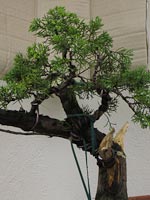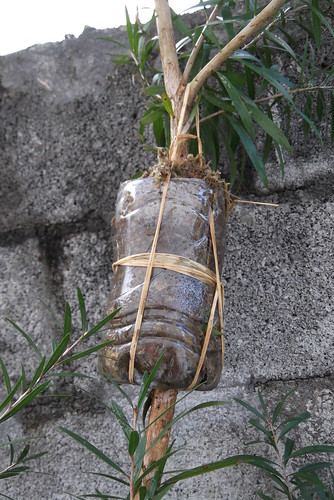Air Layer question
4 posters
Page 1 of 1
 Air Layer question
Air Layer question
Hi Everyone. I'm a newby and also my first post here. I bought a JM Katsura from a nursery. It stands about 2.3m tall and is 5/6 years old. Want to plant it in garden and also layer it. The thickness where the layer will be is about 1 1/2inch. It will be my first layer. I've read up extensively about the technique and it seems rather straight forward and I'm up for it. I found this site....
http://www.buffalobonsaisociety.com/Propagation.html
and the following scares me a little..."The trick in air layering is to remove the cambium, pholem and bark. But you must NOT damage the xylem".
My problem is will I see the xylem so I dont go through and remove it?
Nowhere else (lots of bonsai sites) do I see any mention of this when the air layering technique is explained. Confused:
Thanks in advance for any reply...!
Freddie.
http://www.buffalobonsaisociety.com/Propagation.html
and the following scares me a little..."The trick in air layering is to remove the cambium, pholem and bark. But you must NOT damage the xylem".
My problem is will I see the xylem so I dont go through and remove it?
Nowhere else (lots of bonsai sites) do I see any mention of this when the air layering technique is explained. Confused:
Thanks in advance for any reply...!
Freddie.
fredman1- Member
 Re: Air Layer question
Re: Air Layer question
The bark with the phloem peels off very easily leaving the xylem or wood with a greenish tint on its surface - it is near impossible to make it happen differently. This green color is because of a few cell layers of cambium cells that remain. Just scrape it off with your knife - you don't need to whittle it, just scrape the surface like scraping old paint off a painted board until the green tint seems to be gone.fredman1 wrote:... the following scares me a little..."The trick in air layering is to remove the cambium, pholem and bark. But you must NOT damage the xylem".
My problem is will I see the xylem so I dont go through and remove it?
A common problem is that despite one's best efforts there is sometimes a little line of residual cells that will subsequently grow and bridge the girdle preventing roots from forming. All you really need to do to preclude this is to wipe the prepped xylem surface with isopropyl (rubbing) alcohol - it kills any residual live cells - before you dust with rooting hormone and budle it up.
That is about all there is to it that you don't already know.

0soyoung- Member
 Re: Air Layer question
Re: Air Layer question
Thanks for the response Osoyoung. Please bear with me as I still don't fully understand. According to the diagram in the link the xylem is a layer similar to the phloem and cambium. Wont I damage or remove the xylem if I cut to deep and when I scrape?
The procedure as you described is in line with what I read on all the bonsai sites so that is exactly how I will do it. I just don't understand why the site in the link warns about damaging the xylem....
The procedure as you described is in line with what I read on all the bonsai sites so that is exactly how I will do it. I just don't understand why the site in the link warns about damaging the xylem....
fredman1- Member
 Re: Air Layer question
Re: Air Layer question
Hi,
the xylem is actualy quite a big part of the woordy part of a stem. The bark is notably softer when you have a matured stem (As you would have with trunk of more than 1 year of age). There is no real risk in damaging the xylem layer. I have also seen books advising to cut trough the floem, and removing the firsthalf mm of the xylem to be sure the floem is all gone.
You will very clearly see where the bark stops. The cambium and phloem are separated by the phloem, which is only a few cells thick. Cutting with a sharp knife through the bark, will allow you to peel te bark off with fairly little effort. Subsequenlty you screp the wound to remove any leftover phloem.
the xylem is actualy quite a big part of the woordy part of a stem. The bark is notably softer when you have a matured stem (As you would have with trunk of more than 1 year of age). There is no real risk in damaging the xylem layer. I have also seen books advising to cut trough the floem, and removing the firsthalf mm of the xylem to be sure the floem is all gone.
You will very clearly see where the bark stops. The cambium and phloem are separated by the phloem, which is only a few cells thick. Cutting with a sharp knife through the bark, will allow you to peel te bark off with fairly little effort. Subsequenlty you screp the wound to remove any leftover phloem.

leatherback- Member
 Re: Air Layer question
Re: Air Layer question
Water and mineral nutrients are transported upward from the roots to the leaves through the xylem. This is what keeps your layer alive until it has grown enough roots to survive on its own. Maybe the warnings are because the author air-layers small twigs or doesn't really understand. You can whittle away a lot of the wood and still have a successful air-layer - I just see no need to be so afraid or to use such a crude practice.fredman1 wrote:I just don't understand why the site in the link warns about damaging the xylem....
BTW, here is a mature tree cross-section illustration you may find helpful. The pith is the core of a new shoot or the first season's xylem. In subsequent years a new ring of xylem (wood) is made. After many years the old xylem is abandoned for transporting water and minerals and is clogged up (xylem is literally 'a series of tubes') with phenolics to become heartwood. The still active xylem is often called the 'sap wood'.

Leatherback has the concept, but has confused the terminology a bit. The phloem is just under the bark and outside the cambium. Photosynthates and auxin (rooting hormone) are transported down the tree toward the roots in the phloem. These pile up at your air-layer girdle (because you have removed the phloem) and is what drives the process of forming the 'adventitious roots' you are trying to get. Cambium cells form a ring. They are the cells that divide to make the tree grow. They are 'stem cells' that differentiate to make new phloem cells on the outside and new xylem cells on the inside of the ring. Almost always, more cells become xylem that become phloem. Old phloem cells also get clogged eventually and become bark. In effect, trees grow by putting on another suit of clothes atop the old ones every year.
As I said before, when you peel away the bark, it will almost inevitably split in the layer of cambium cells. I suggest that you prune off a big twig/small branch that is unimportant and look at the cut end with a magnifying glass. Also, either make a small axial cut with a knife or use your thumbnail and peel away some bark from this cut end. I think you will see all the details I and your reference article(s) talk about.
enjoy!

0soyoung- Member
 Re: Air Layer question
Re: Air Layer question
Thanks again. Very well explained. It makes perfect sense now. WOW what a great site and people. So much knowledge and information here. Long may it last..... :D
fredman1- Member
 Similar topics
Similar topics» Air Layer Question
» Air layer question
» chinese juniper air-layer question...
» Japanese Maple, to layer or not to layer?
» Small Elm winter image
» Air layer question
» chinese juniper air-layer question...
» Japanese Maple, to layer or not to layer?
» Small Elm winter image
Page 1 of 1
Permissions in this forum:
You cannot reply to topics in this forum













